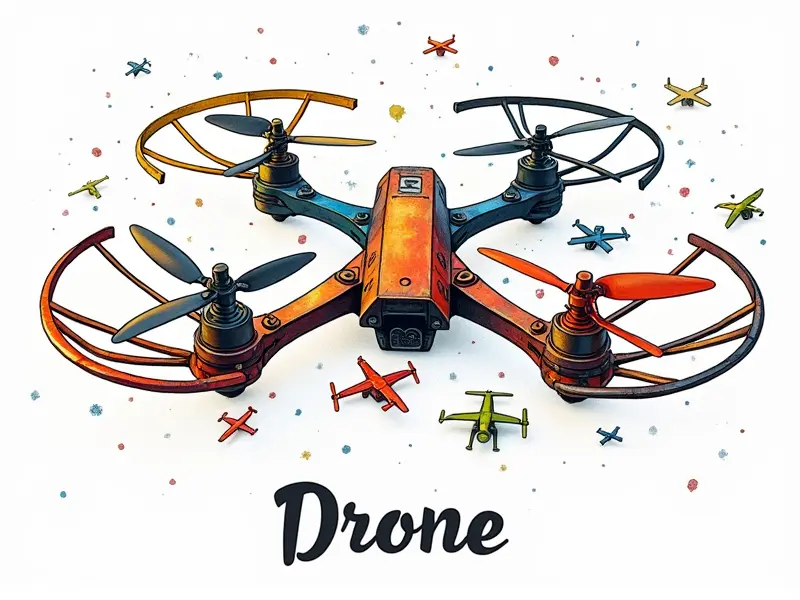RC quad frame type?

Best RC Quad Frame Types Explained
When venturing into the world of remote-controlled (RC) quadcopters, selecting the right frame is crucial for achieving optimal performance and stability. This article delves into various types of RC quad frames, providing insights to help you make an informed decision based on your specific needs.
Choosing the Right RC Quadcopter Frame
Selecting a suitable RC quadcopter frame involves considering factors such as intended use (racing, aerial photography, or general flying), motor specifications, and battery capacity. Understanding these elements will guide you toward a frame that best suits your requirements.
Top 5 RC Quad Frames for Beginners
- H-frame: Known for its simplicity and ease of assembly, the H-frame is ideal for beginners due to its straightforward design and stability.
- X-frame: This frame offers better aerodynamics and maneuverability, making it a popular choice among enthusiasts looking for more advanced features.
- Foldable Frame: Provides portability without compromising on performance, perfect for those who frequently travel with their RC quadcopters.
- Laser Cut Carbon Fiber Frame: Offers high durability and lightweight construction, suitable for both beginners and experienced pilots.
- 3D Printed Frame: Allows customization and flexibility in design, catering to individual preferences and specific performance needs.
H Frame vs X Frame: Which is Better?
The H-frame and X-frame are two of the most common types used in RC quadcopters. Each has its unique advantages:
H Frame Advantages
- Simplicity: Easier to assemble and maintain.
- Stability: Provides better stability, especially during hovering.
- Cost-Effective: Often more affordable compared to X-frame designs.
X Frame Advantages
- Aerodynamics: Offers superior aerodynamic performance.
- Maneuverability: Provides better agility and responsiveness during flight.
- Wind Resistance: Better equipped to handle strong winds.
Lightweight RC Quad Frames for Racing
For competitive racing, a lightweight frame is essential. These frames are designed with materials like carbon fiber and aluminum, ensuring minimal weight while maintaining structural integrity. Features such as low-profile designs and optimized aerodynamics contribute to superior performance in high-speed scenarios.
Modular RC Quad Frames Overview
Modular frames offer flexibility and adaptability by allowing users to customize their setups according to specific needs. Components like arms, battery holders, and motor mounts can be easily interchanged or upgraded, making these frames highly versatile for various applications.
Understanding Tricopter vs X-Frame Design
The tricopter design is less common than the quadcopter but still merits discussion:
Tricopter Advantages
- Simplicity: Only three motors and fewer moving parts, making it easier to build and maintain.
- Vertical Lift Capability: Enhanced vertical lift due to the absence of a fourth motor interfering with upward thrust.
X-Frame Advantages Over Tricopter
- Stability: Four points of support provide better stability and control.
- Aerodynamics: Superior aerodynamic performance due to symmetrical design.
- Mechanical Redundancy: If one motor fails, the other three can still maintain flight.
RC Quad Arm Designs Demystified
The arm design of an RC quadcopter plays a crucial role in its performance. Different materials and constructions offer varying levels of strength, weight, and durability:
- Copper Alloys: Known for high tensile strength and corrosion resistance.
- Carbon Fiber: Extremely lightweight yet strong, offering excellent vibration dampening properties.
- Aluminum: Balances weight with cost-effectiveness, providing adequate rigidity and durability.
RC Quad Frame Materials Compared
Selecting the right material for your RC quad frame is vital to achieving desired performance levels. Common choices include:
- Copper Alloys: Superior mechanical properties but more expensive.
- Carbon Fiber: Lightweight and strong, ideal for high-performance applications.
- Aluminum: Cost-effective with good strength-to-weight ratio.
Optimal RC Quad Frame Size Guide
The size of your quadcopter frame should be determined by the intended use and payload capacity. Larger frames typically offer better stability but may sacrifice maneuverability, while smaller frames provide agility at the expense of lifting heavier payloads.
- Small Frames (150mm-250mm): Ideal for racing and indoor flying.
- Mid-Sized Frames (300mm-450mm): Versatile for both racing and aerial photography.
- Larger Frames (500mm+): Suitable for heavy lifting, long-range flights, and professional applications.
RC Quad Frame Stability Factors
Maintaining stability in an RC quadcopter is crucial for safe and effective operation. Key factors influencing frame stability include:
- Balanced Arm Lengths: Ensures even distribution of weight.
- Proper Motor Mounting: Precise alignment minimizes vibrations and enhances flight performance.
- Aerodynamic Design: Reduces wind resistance, improving overall stability and control.
Conclusion
In conclusion, choosing the right RC quad frame is a critical decision that impacts your flying experience significantly. Whether you are a beginner looking for simplicity or an experienced pilot seeking high-performance options, understanding the various types of frames and their unique features can help you make an informed choice.
From H-frames to X-frames, lightweight racing designs to modular setups, each frame type offers distinct advantages tailored to specific needs. By considering factors such as intended use, motor specifications, and battery capacity, you can select a frame that enhances your RC quadcopter's performance and stability.

